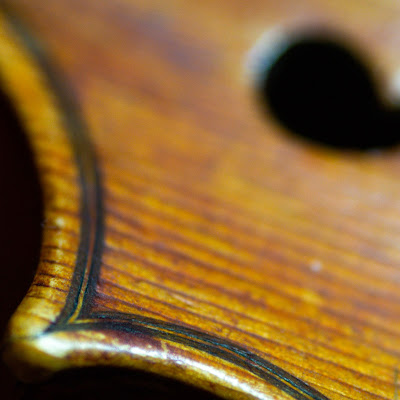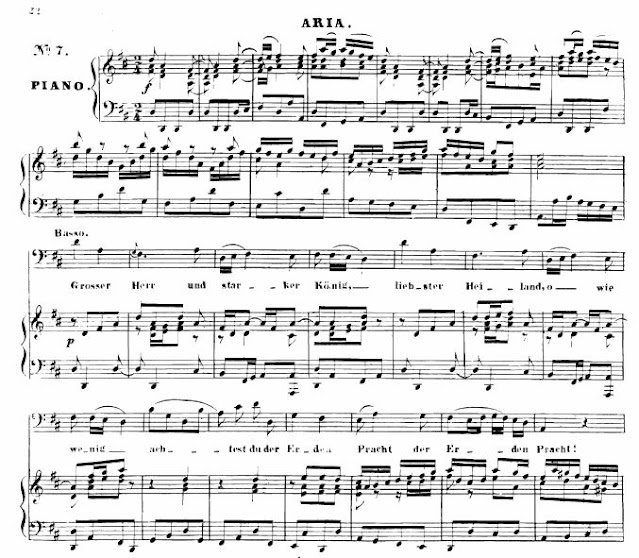Well-situated

That certainly didn't take as long as I thought it might.
My original goal was to play in the classical Untertürkheimer Kantorei orchestra in December 2020. However, thanks in part to the lock-down but much more to my enthusiasm for the new instrument, I've made quite some progress with the violin.
The Virtuoso Violinist posts very helpful tips on Instagram about implementing the Dounis Method when playing strings. I try to internalize - or at least try out - the ideas and get an idea for what challenges face me in the coming months and years.
I was also lucky enough to run across a live living-room concert given by the incredible violinist Augustin Hadelich during the restrictive lock-down. When I watch such concerts online, I rarely stay with the canned performance more than two minutes but this time I was spell-bound. Never having heard of him or this concerti series before (mea culpa!), I began by trying to judge the performance from a critic's point of view. He began with Bach's Sonata No. 2, with which I was not particularly familiar. I had given my CD of Milstein playing the Sonatas and Partitas to someone years ago (just add a "mea culpa" after every sentence). So watching on my phone, I soon decided this guy was pretty damned good, but I didn't want to miss a minute doing a search for his background. After the 11-minute first movement he played what quickly became for me the most beautiful music I had ever heard on violin. By that time, I didn't really care who he was or what he had achieved to that point, because at that moment he stole my heart. The Andante, which you should all listen to NOW, played live in his living room, is indescribably gorgeous. Bach moves from the a-minor in the first movement to C-Major and floats an aria atop eighth notes that drop onto the lower strings like magic. I've tried to play it but will probably have to wait years before I have any success.
 Hadelich is an articulate, intelligent, generous, passionate musician, who also began posting tutorials under the name "Ask Augustin" and chamber music videos (often accompanying himself on the piano) on both Instagram and YouTube. I've learned a lot from him as well.
Hadelich is an articulate, intelligent, generous, passionate musician, who also began posting tutorials under the name "Ask Augustin" and chamber music videos (often accompanying himself on the piano) on both Instagram and YouTube. I've learned a lot from him as well.After listening to much of what he's recorded, I can report that he's one of the only musicians I enjoy listening to when they play virtuoso pieces. He recorded one of the 24 Caprices by Paganini for Nicky Benedetti's lock-down project and - well listen to how he plays the music and not just the notes! He comes up at 2.28. The sound of his Guarneri (an upgrade from the Strad he used to play) is exceptionally beautiful.
But there is still nothing like a live teacher who watches you play and sees where you can change things to improve. My wonderful friend and violin maker, Kacy Crystal-Spörer, has helped me in that regard the couple of times she's listened to me play. And the teacher she found for me, Nina Eychmüller, has been very patient during - and between - our eight lessons (one via skype). I always have dozens of questions for her about things I've read, heard or seen recently. At the outset I had no idea what challenges violinists faced, so I tried out things I saw other violinists doing. As a pianist, I knew all about that repertoire, the spectrum of most-to-least difficult pieces and I was aware of how to practice to overcome the challenges.
I knew that playing the violin was supposed to be difficult, but after three lessons I gave my first recital, playing an aria I had worked on by myself ("The sun whose rays are ablaze" from The Mikado, an operetta that my father and I both love). During the short practice before the recital, she saw me playing up in the third position ("because it seemed easier to play that way," I explained) and just laughed and said, "Go ahead and play it like that. But, look, you can also play the F# up there too."
I worked my way through the books she gave me and everything I could find online, including dozens of collections of studies and other pieces for beginning to intermediate players on Scribd and the IMSLP. There was no lack of repertoire.
I even got so enthusiastic that I had an arranger in the US take the first fugue in Shostakovich's Op. 87 and arrange it for string quartet and oboe, thinking I'd play it some day with my teacher and her family (who fit the bill for the other parts). Maybe one day I'll be locked down with them and we'll run out of other things to play and we can try that out. In the meantime, I use the violin parts for my warm up exercises (alternating with the parts from Gorecki's Third Symphony).
 Well, things were going well until they started going even better. I took the fiddle to my band practice one night. I didn't have the guts to unpack it that night, but it was the first step. I play keyboards and sing pop and rock songs with a great group of other musicians.
Well, things were going well until they started going even better. I took the fiddle to my band practice one night. I didn't have the guts to unpack it that night, but it was the first step. I play keyboards and sing pop and rock songs with a great group of other musicians.The following week, however, I took out the fiddle and bowed to some of the quieter pieces. Excited by how it sounded and how fun (and relatively easy) it was to improvise a second voice to the first song, I looked at the others to see what they thought. We all agreed that the instrument and the new voice added a further dimension to the music, so I continued.
In the meantime my daughter has begun to sing with the band and can take over some of the keyboards while I play the violin. That's so wonderful. I can "rock out" on the violin, looking for phrases and bowing that fit the music and graciously have several verses with which to improve upon my first attempts. We work on the pieces and play around with them, trying to bring out everything we possibly can with our instruments. So when we repeat the piece, I might even have an idea that leads to a new impulse which is felt by the others and responded to. It is real music making as opposed to what I used to do: play the notes.
 Then a second band asked me to swing by with my violin a few weeks later. I knew the singer, who assured me the guys were all very relaxed and nice. And that they were. A six-piece band that really knew its stuff let me sing along to the first pieces and after 4-5 pieces I went over to another microphone and started fiddling along to songs I didn't necessarily know. But the good thing about pop music is that after half a verse you can pretty much tell where it's going, and if you know what key the piece is in, you can just play and have fun with it. So there I was listening to very good musicians playing away at Randy Newman, Lionel Richie, Phil Collins, Peter Maffay and others while I was doing my best to make myself heard, playing double stops (two strings at once) and taking advantage of quieter passages to add my music to the mix. This is indeed what I want to be doing now.
Then a second band asked me to swing by with my violin a few weeks later. I knew the singer, who assured me the guys were all very relaxed and nice. And that they were. A six-piece band that really knew its stuff let me sing along to the first pieces and after 4-5 pieces I went over to another microphone and started fiddling along to songs I didn't necessarily know. But the good thing about pop music is that after half a verse you can pretty much tell where it's going, and if you know what key the piece is in, you can just play and have fun with it. So there I was listening to very good musicians playing away at Randy Newman, Lionel Richie, Phil Collins, Peter Maffay and others while I was doing my best to make myself heard, playing double stops (two strings at once) and taking advantage of quieter passages to add my music to the mix. This is indeed what I want to be doing now.Recently I bought a Looping Station and will have an electronic pick-up put on my second violin so that I can start creating music in a new - electronic - way. Then Fiona can plug her ukulele or our keyboard into it, we can set up the microphone and really jam!





I love your enthusiasm! It's fun to hear you talking about your passion for the instrument and I'm amazed at how much you've learned to do in such a short time!
ReplyDelete